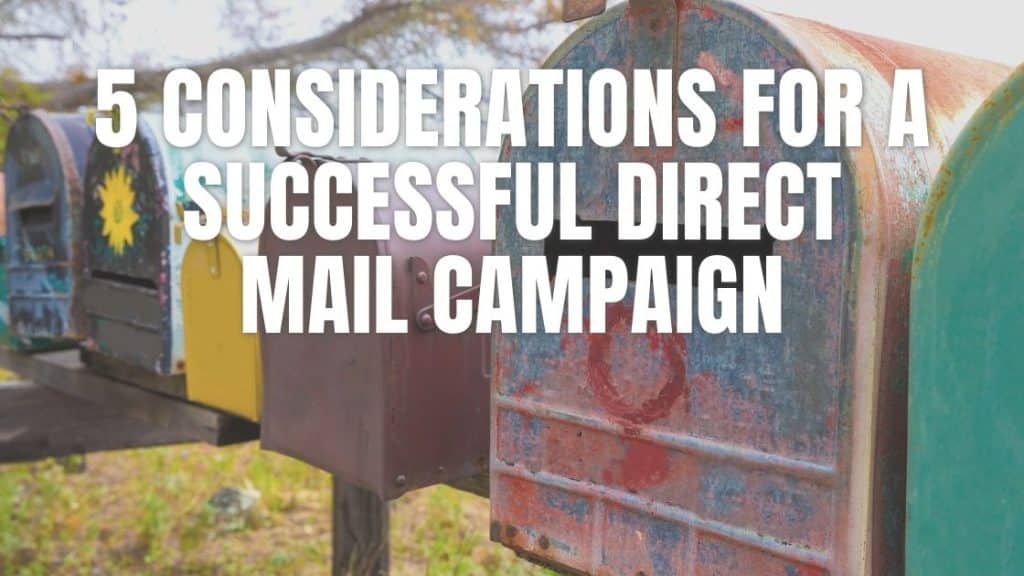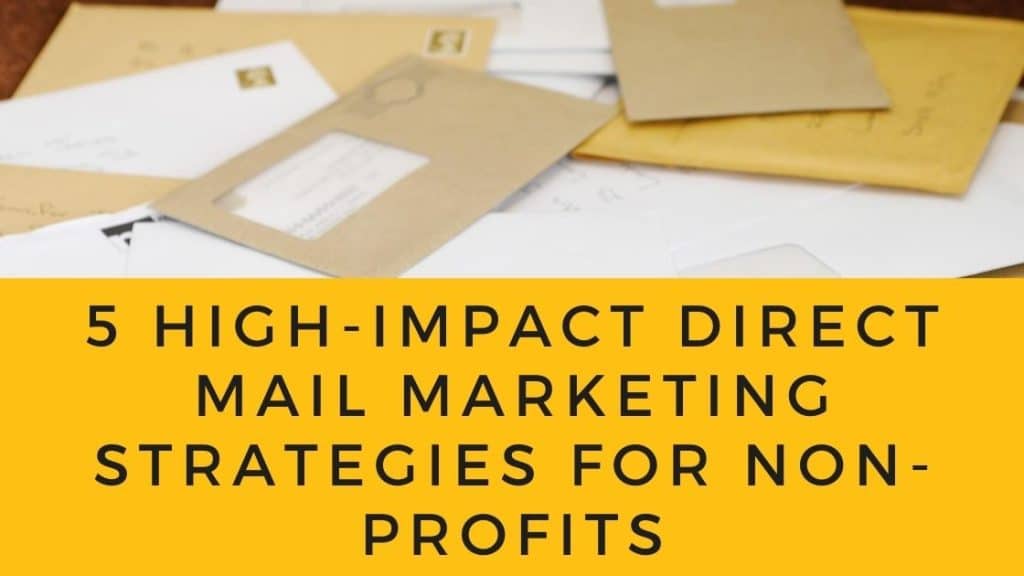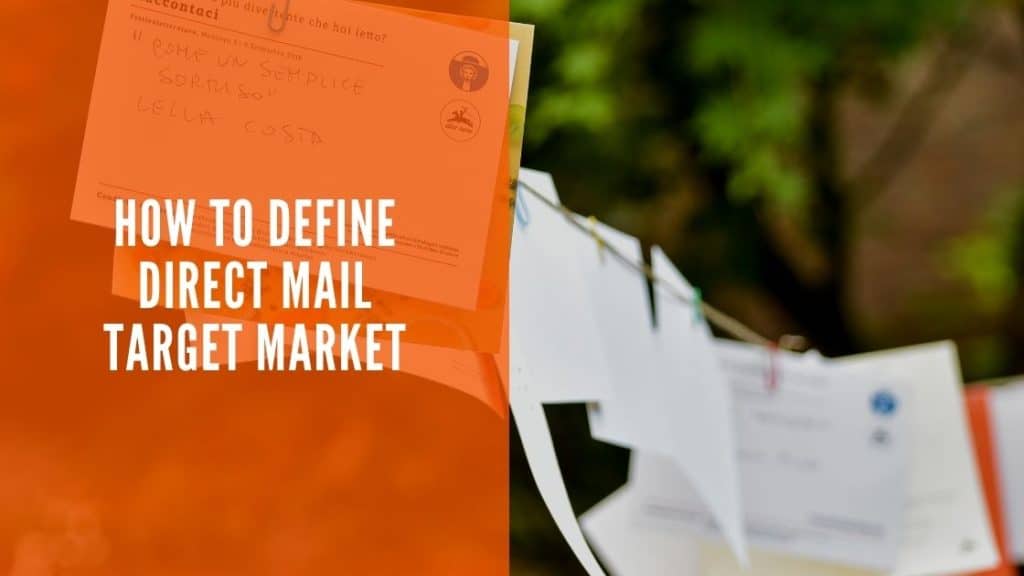Watch Episode:
Episode Transcript & Audio Only:
IMPORTANT NOTE: This transcript has been provided by an AI speech-to-text program. There may be some discrepancies between what was said and what this transcript shows.
[00:00:08] Hello everybody and welcome to Ink & Bytes.
[00:00:11] Your 1-to-1 marketing tips for marketing professionals. I’m your host Andrew Glover. A little bit of background on myself.
[00:00:20] I am a market professional with ten years of marketing experience. Most recently I’ve been working a lot with one to one marketing however I also have a breadth of experience from photography and working as creative director as well as the strategic and working right-this-second as the vice president of business development and marketing strategy at Valtim Marketing Solutions who is awesome enough to be sponsoring this endeavor.
[00:00:46] So today’s topic is talking about leveraging third party data. You know one of the things that is just absolutely vital in any kind of one to one marketing endeavor is understanding the data and leveraging the data that you have. So today we’ll be talking about ways to take your current data expand the breadth of it so that it can be used to create real powerful and effective marketing campaigns. So this can be. Accomplished by leveraging third party data sources and augmenting any kind of list that you have whether that’s a prospecting list that you’ve purchased or a house list that you have on file already.
[00:01:29] We will talk about ways to build better segmentation is that our customer personas.
[00:01:33] And of course better creative and call to actions so as always let’s talk about a little bit of you know definition of terms what is third party data. Third party data is any information collected by an entity that does not have a direct relationship with the user. That the data is collected on. Often this is third party data that’s been generated on a variety of platforms a variety of websites and then it’s aggregated together by that third party data provider. So lets kind of reverse back and talk about first party data. First party data is the data you collect on your own audience through your own sources. Those are surveys that you do of your customers information that your customers provide in any means. And we’ll get to that a little later. Second Party data is slightly different. Second Party data consists of first date party data collected by another organization. So that’s like a lot of times your partner organizations or partner companies that give you their data on their customers.
[00:02:41] That’s slightly different than third party data where the third party has zero relationship. Zero zero relationship with the customer the user that their data is being reported on. So let’s talk a little bit about how to use this data and really the best place to start when we talk about using this data is to start with the own the data that you have yourself you know depending on your CRM that you use depending on what type of organization or business or company or whatever you’re marketing you’re going to have a set of data. A lot of times it’s a nonprofit or business and you’re selling goods you’re collecting donations. There’s a billing address. Right. So you collect that billing address. You don’t really think anything of it until you realize by how I have their location. Well that’s location data and you can use it. Location data is so vital because you can use it to cross-reference it and project trends from the third party sources that you’ll acquire other data that you have is affinity data. That’s the data you collect that talks about and discusses how your user how your customer how your member known or whatever it is how they interact with your organization why are they a member of your organization you can get this information by looking at the data trends of this individual you know which Web sites are they are the Web site pages on you.
[00:04:12] Are they visiting. What information are they requesting from the user. You know do you have multiple business lines and you have one customer that’s inquiring about a single line of data or a single line of products. If you’re a nonprofit maybe what. What marketing campaigns have they responded to in the past. You know maybe they respond to one call the act share one type of messaging better than another is in your split a b testing well track back that’s affinity data and can be used in that you can also cross-reference that when you go to build personas with third party data. A few other options is some depending on your organization you may have first party data from incoming on income. And if you don’t have income data I’ll show you how to get that income data in a few minutes and then of course gender data. This gender data you go Well I don’t ask you if you’re male or female but one way that you can get at this from a first party perspective is in any forms have them fill out that solicitation Mr. John sample Mrs. Jane Doe whatever it is by just having that salutation in the form captcha that you get your users to submit their information on. Now you can capture their gender of course when you’re building your messages you need of course have full backs.
[00:05:23] So let’s go to the next one.
[00:05:28] So that’s a you know the foundation is start with the information that you have.
[00:05:33] Beyond that you need to then go to your second and more importantly third party data sources to really augment that house list that you have. The other thing that you can be augmenting is a prospecting list and you went out and bought a really generic prospecting less first name last name and their address. You need ways to augment that list using third party data sources to make a more effective call to action a bit more effective targeting more effective segmentation. So there’s a few places to get third party data. The the biggest one that you can go to is honestly government sources especially and then I’m talking specifically to United States businesses here.
[00:06:13] The government collects a lot of information on a lot of different people and although it’s it’s not P.I. information is not personally identifiable information. It’s pretty close to it because a lot of the tracking that they provide is on what’s called the block level and the block levels based off of census data and it gets really complex. But bottom line let’s talk about an example here is I recently had a case where telecom organization contacted me and said we want to be able to market to organizations or to people who do not have good broadband Internet.
[00:06:51] And you go Well I can’t tell who does and doesn’t have good broadband internet except that the government does what we did is we took a prospecting list and we can then layer over that FTC broadband reports that report on the block level not just the zip code level but even areas within the zip code and then we you know purged anybody that had a certain level of broadband. And that was a government source FTC broadband report. You know there’s other reports out there especially the census data provides income information and then on the block level you can get down to certain neighborhoods of course have higher income levels and you can kind of deal models off of that. So if you’re looking for you know as a nonprofit how much should I ask an organization or how much should I ask this entity to donate. Take a look at their income. Match the addresses to two income block level details or even income ZIP code level details is really popular here in the Lynchburg Virginia area and we have a few area codes that are higher income area codes compared to others so you can go and you know state level city level ZIP code level block level. There’s a lot of other third party sources out there. If you’re a member of an industry group a lot of times those industry group to do their own research and provide the members that research and you can leverage that the data from your industry organizations and augment that list and attach more information to the users based off of the information you’re able to pair with those other sources.
[00:08:31] And then the last place of course is a data broker or third party data provider. These are people who. Who specialize in data provisions. A lot of them still try to sell you their own lists and depending on your application that might be a really good option because they’ll do all the augmentation and stuff for you or you may want to just be able to match your current list against their their data that they’ve identified. So for instance in the USA call it does a lot of affinity data on not just personal wealth but specific interests you know people who have a specific interests in shopping or specific interests in sports or specific interests and whatever it is.
[00:09:11] And if you can augment your data to be identify maybe the sport nuts versus you know the tech nerds you can craft your message and target your lists based off of that information. You can target it not just on direct mail you know the address but you’re tracking IP. You can then do IP targeting based off of that new persona that you built.
[00:09:32] So really cool stuff on where to get third parties on data augmentation stuff so then that leads us kind of to the final portion of this is how to effectively use that third party data.
[00:09:45] And I cannot stress this enough your third party data that you’re using in your marketing campaigns needs to be a team effort. Get out of your silos your data people are really intelligent people. They they get data analysis like you pick out trend lines and stuff like that data is great but without the storytelling from your creatives it’s all off in an effective. So data analysts need to work with creative minds develop the powerful marketing messages so get out of your silos you need to get a really good team mojo going on and had your day data people work with your creative people to really hone in on the personas that they’re building hone in on the marketing messages that you work out the segmentation and stuff like that and build stories around that partnership of your data and creative departments. So once you have your story outline the next thing also work same partnership. There is work to take your segmented story and make it personal. This should incorporate not only the segments specific messaging but also individualized content. So for instance when you’re referring to geographic regions try to refer to geographic regions that the consumer is from you know refer to the population at large as Virginia residents or Lynchburg city residents vs. you know just kind of members or customers are interested in this say customers at Lynchburg Virginia are interested in this or if you’re a conservative woman that we really did this was really cool is we matched voting population on the zip code level and based off of a conservative or a liberal viewpoint we changed the call to action based on the cities pop voting records so that you know join you the other thirty thousand conservative voices in your community or fight against the fifty thousand liberal votes in the last election and we really made that hyper local we still had this segment and story the segmented approach but we then took it one step level and made it more individualized. So really that’s that’s all data that wasn’t available on prospecting lists but we took it and matched it to a third party dated augmented list. We discover the voting records for a city based off the location which we had from the first party data and the campaign and really into a really successful. So wrapping it up here really what we need to talk about is the lack of first party data is no longer an excuse for the spray and pray market method.
[00:12:24] You can’t just create one single message blast at all that one single message to everybody what the excuse is saying well I don’t know who my audiences you know that’s that’s an excuse that I have a lot I hear a lot is Oh well I bought this prospecting list and the only list I have and I don’t know any other information about the people the names on this list on whether you’re prospecting on the digital channels or direct marketing direct mail channels those excuses are out the window. You can augments your lists with second and third party data. There’s no more excuse for spray and pray it Bearman I mean you need to have personalization. Ideally you have individualization on multiples market segments so that’s you know wrapping up our discussion on leveraging third party data. And of course this discussion would not be possible without Valtim Marketing Solutions who is sponsoring this web in our series Valtim Marketing Solutions is it really started 30 years ago they have 30 years experience as a fully integrated back and marketing logistics provider providing direct mail call center digital marketing data management services. The real focus is direct mail and direct response and large non-profit membership organizations. They process two and half million records per month sixty five thousand of capacity and ninety nine point eight percent accuracy. You want more information definitely reach out to me. Other than that guys have a great day.[/vc_column_text][/vc_column][/vc_row][vc_row][vc_column][/vc_column][/vc_row]



